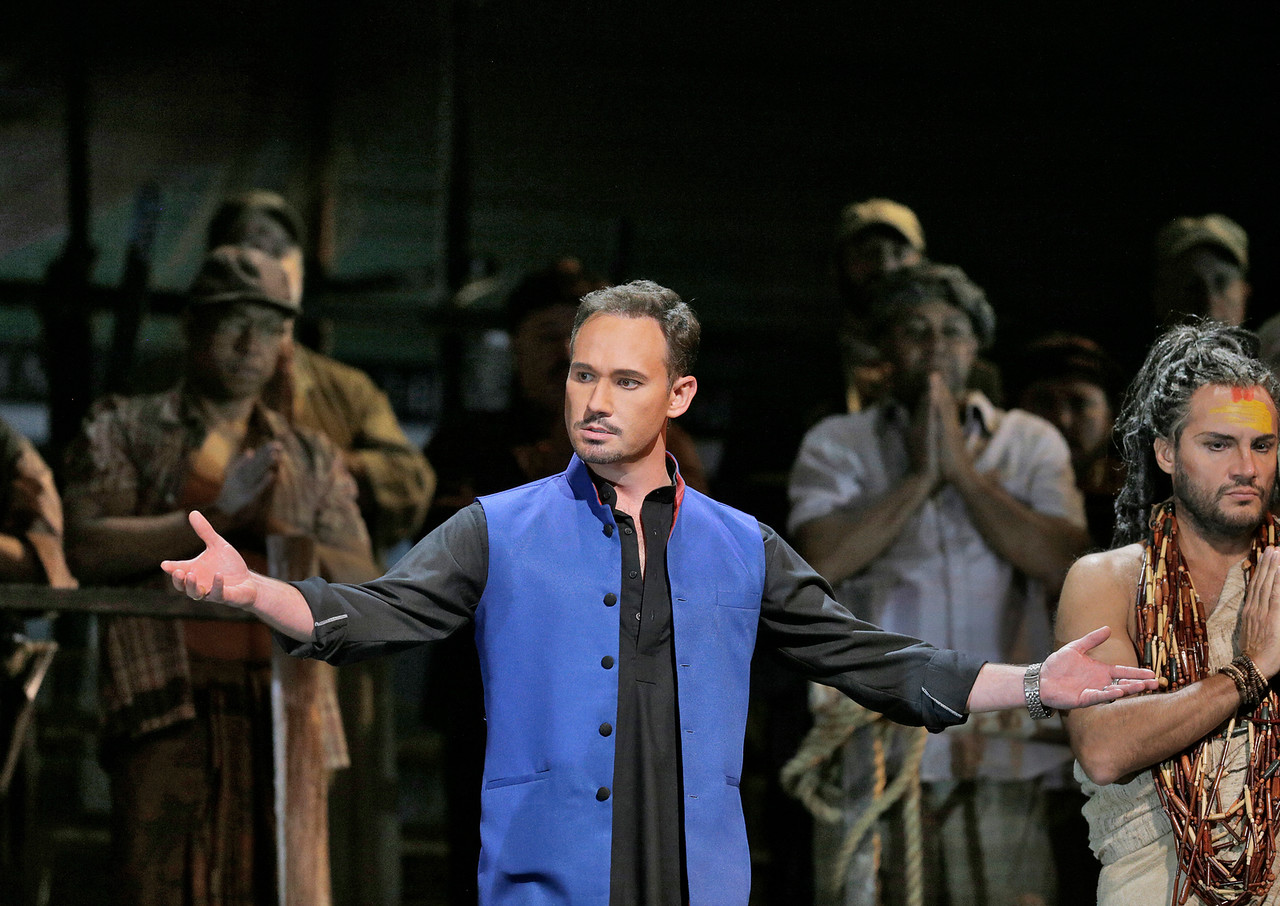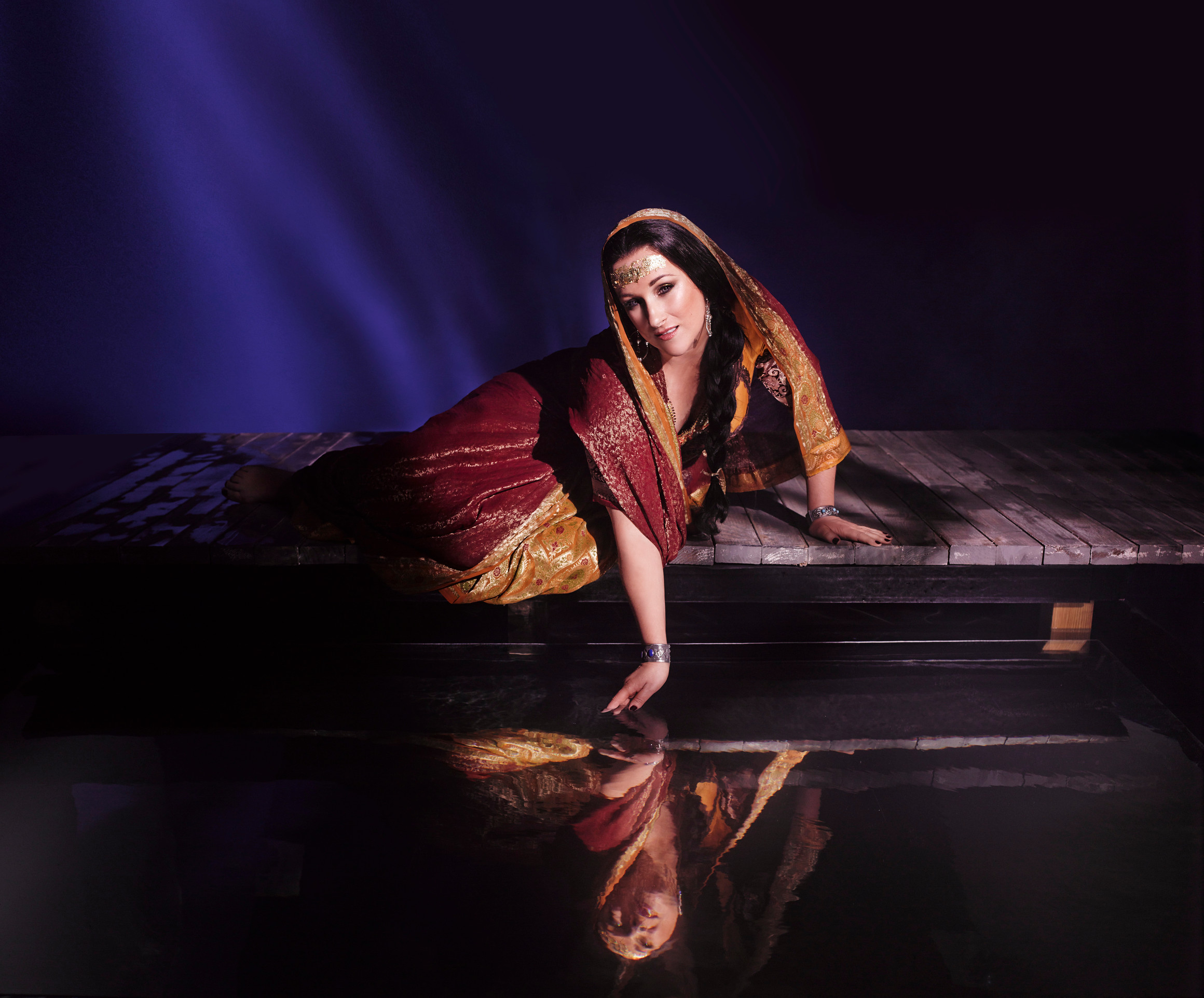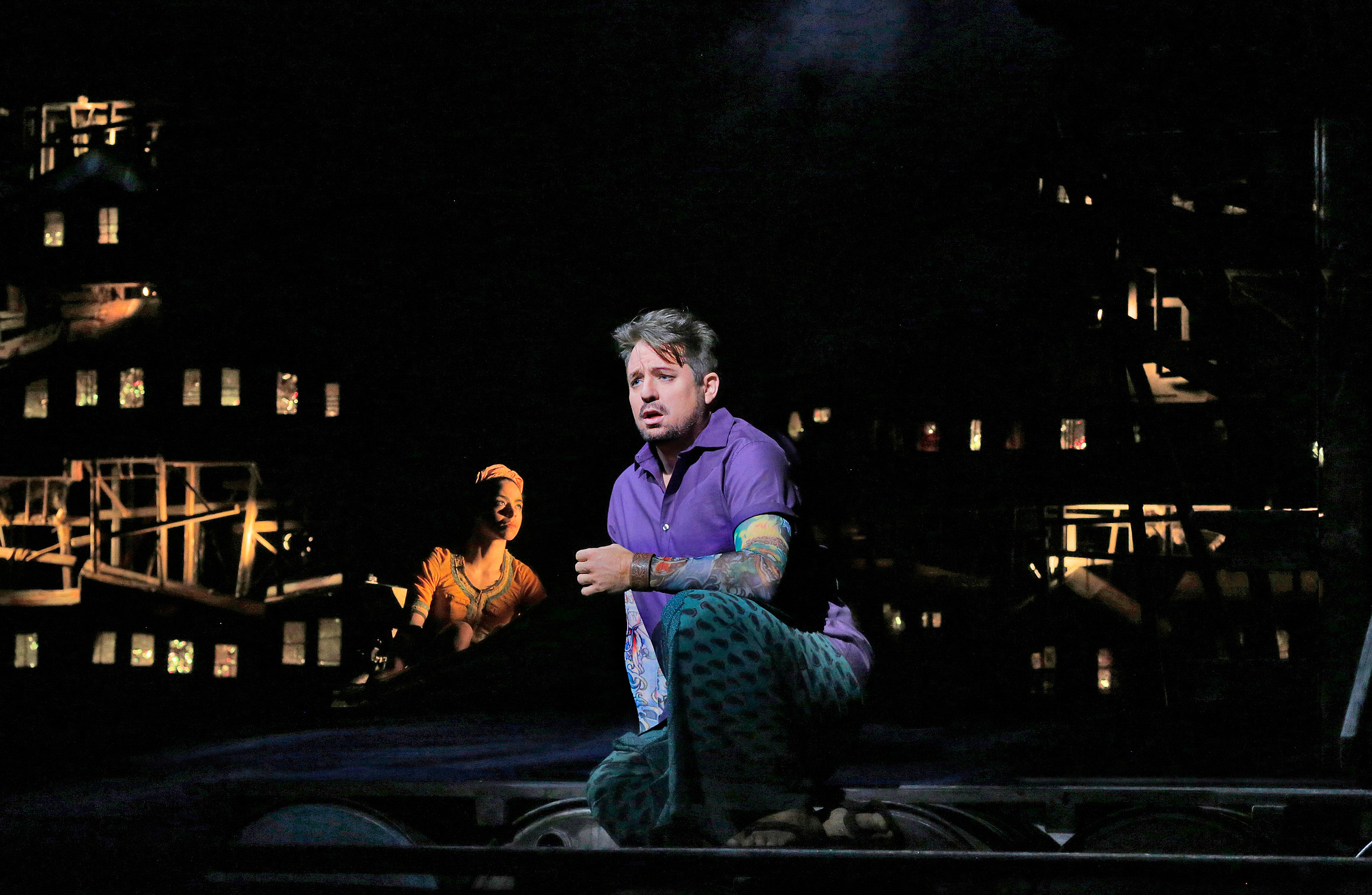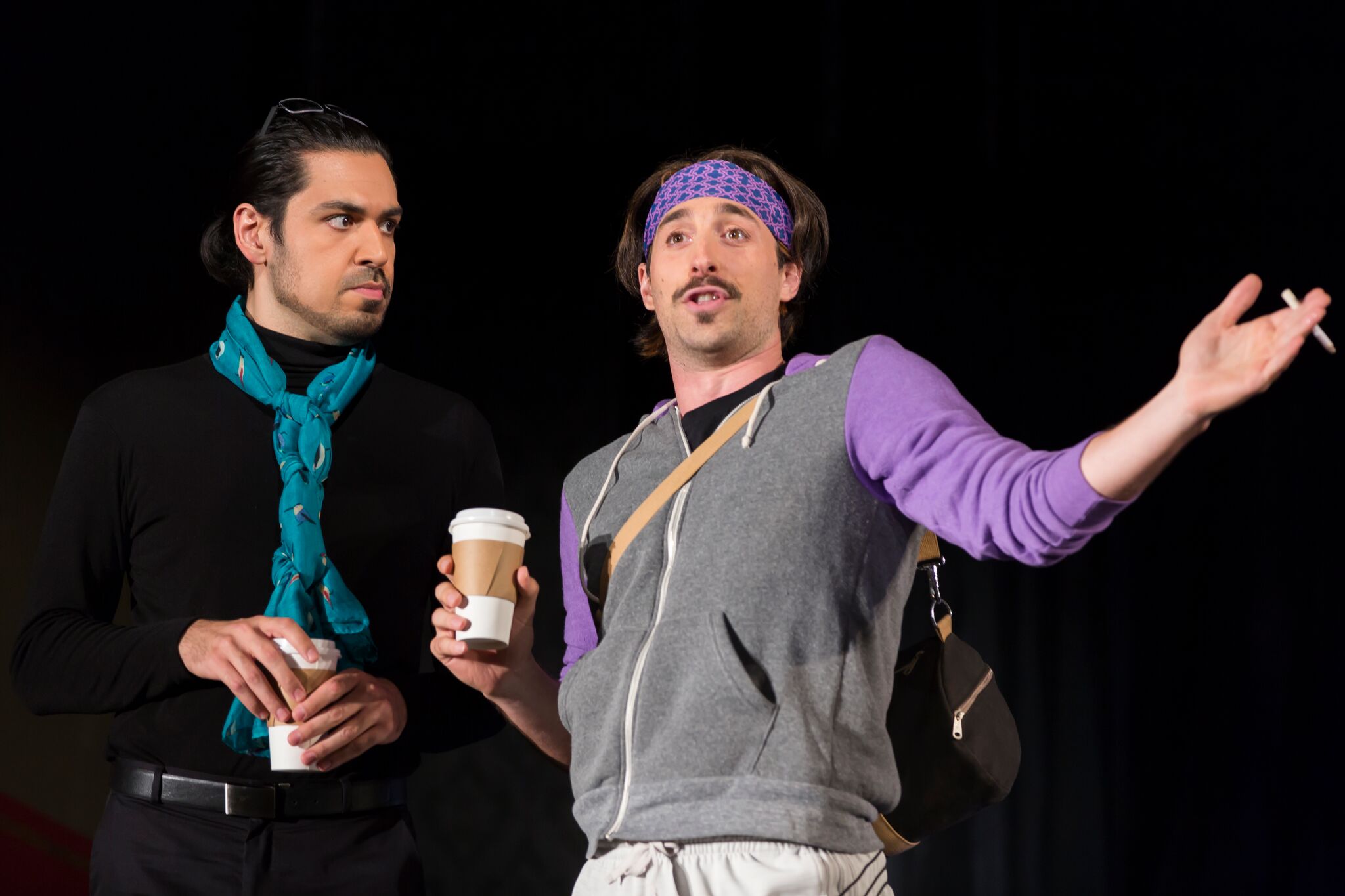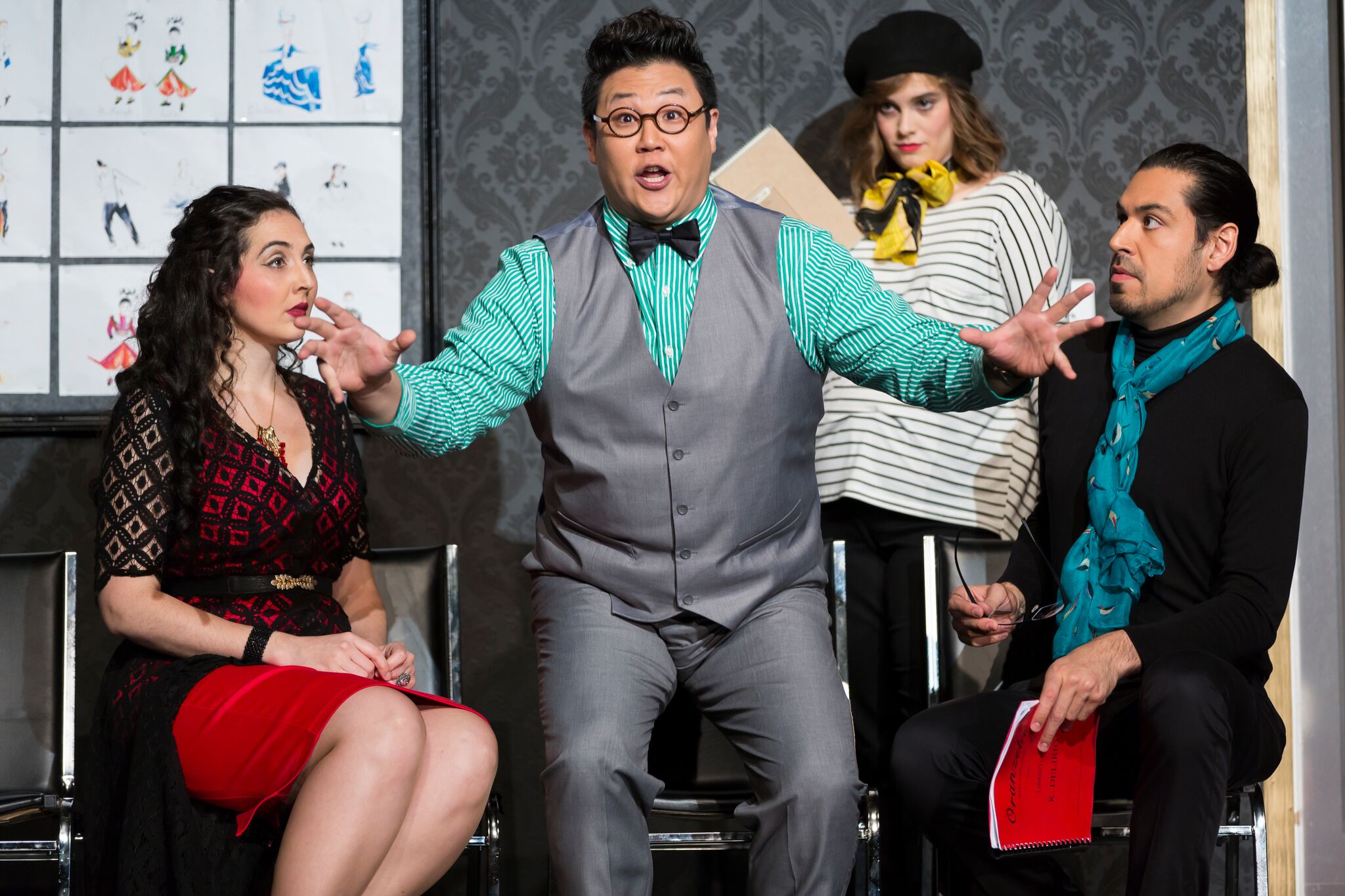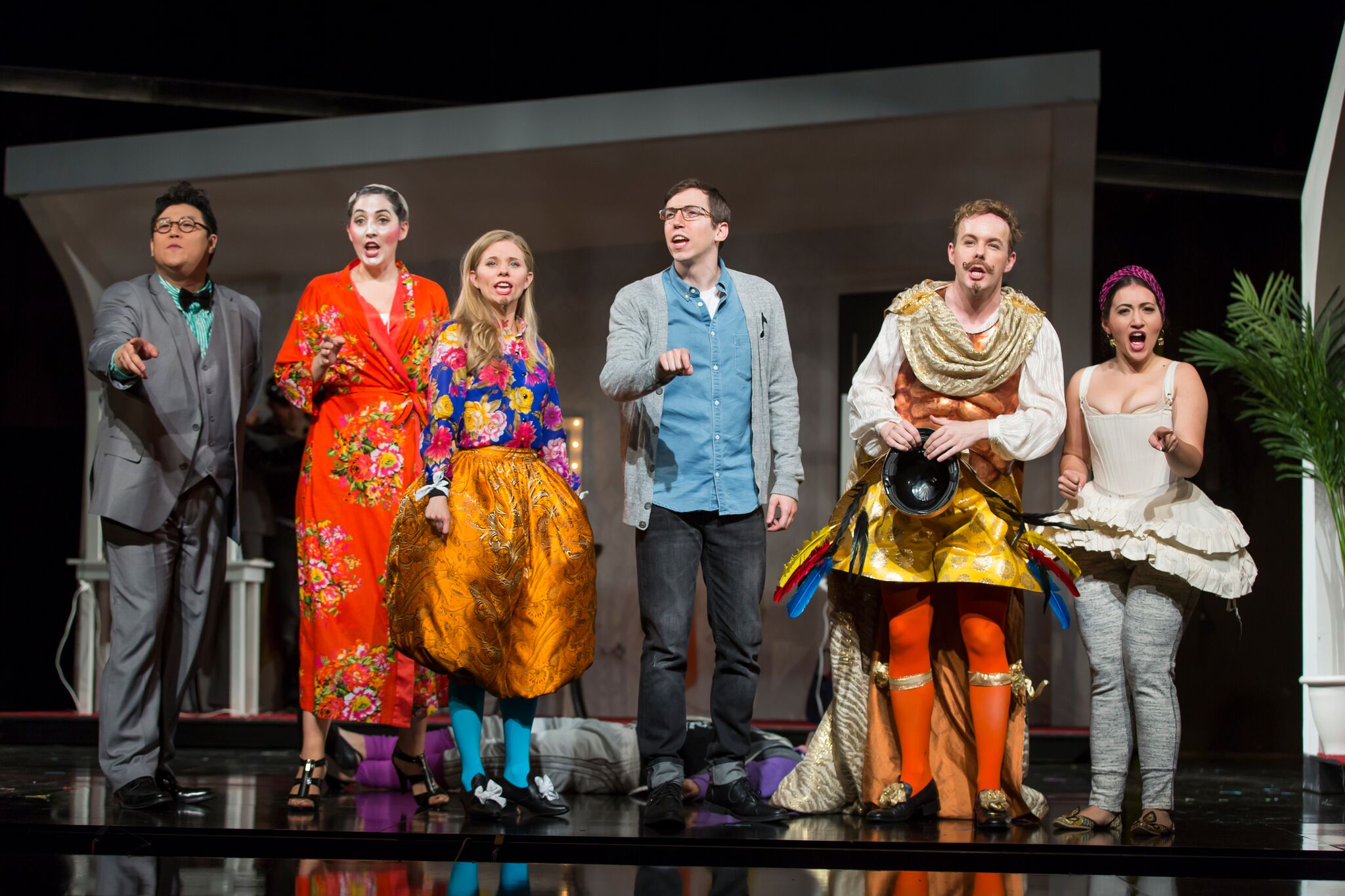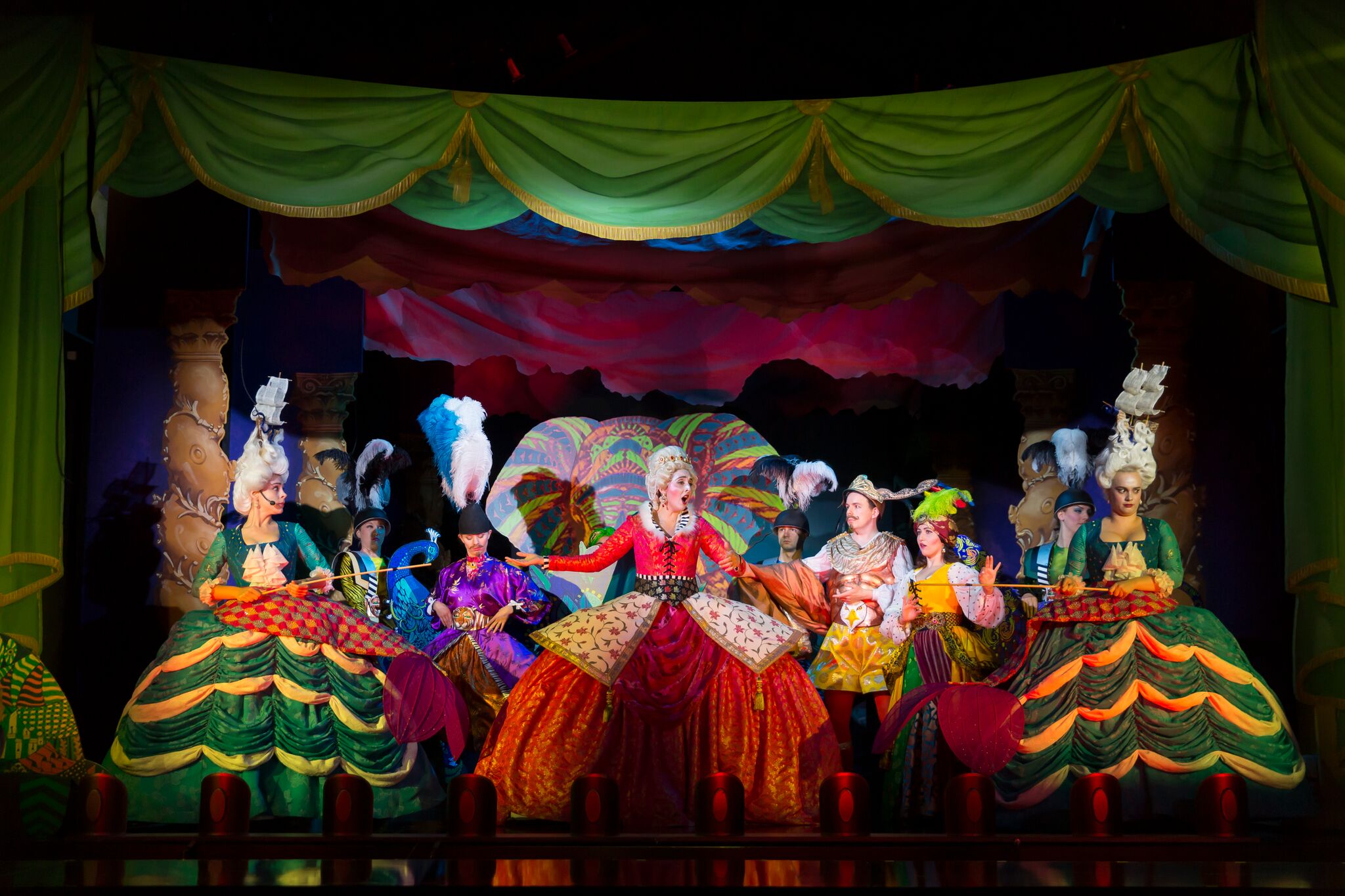I was excited to have a chance to see the opera The Man Who Mistook His Wife For A Hat. So, last Saturday, my wife and I headed out from the Tyson’s Corner area to the Atlas Performing Arts Center in DC to see the Urban Arias production. This was my first visit to one of DC’s “small opera” companies’ productions, and it is a different experience. In fact, it took me back to the days my wife and I routinely attended small, local theater productions in our twenties and thirties, before we could readily afford the major venues in DC. It felt a little strange at first doing this again, as though the intimacy and the minimalist setting so readily embraced in youth had become somewhat daunting in later years. But I warmed up, and it left me remembering the romance of those early years. I was also pleased to see a younger clientele on the average for the Urban Arias production than I typically see at the Kennedy Center.
Photo of Atlas Performing Arts Center by Debra Rogers, October 15, 2016.
I think it is worth taking a moment to further contrast this experience with our experience of going to Washington National Opera performances at the Kennedy Center. First up, my ticket for the Hat with a Senior Discount was $32. My tickets to the Kennedy Center performances are usually in the $70-120 range for seats in rear orchestra or in one of the balconies. Advantage: Urban Arias. My seat in the Paul Sprenger Theatre in the Atlas Center was almost within range to shake hands with the singers. There were five or six rows of seats in a middle and two side sections that wrapped around the stage in a 180 degree arc; almost completely filled, as it was Saturday night, it holds not more than about 100-125 people. Of course, you pick your seat at Kennedy Center, whereas seating at the Atlas Theater is open. Advantage: it depends on your preference and the opera. I like the chance to be so close to the action and hear the voices so directly, for operas with few singers and little staging. The intimacy definitely heightens the emotional involvement. With a large number of singers and cast, it probably would not work. With the Washington National Opera you get a full orchestra. With Urban Arias, there is a small ensemble. For the Hat, there were seven musicians led by conductor Robert Wood, founder of Urban Arias. Advantage: generally I’d say WNO, but for some operas, like the Hat, the score is written for a small ensemble. Finally, for the Kennedy Center, opera performances are typically 2-3 hours and can go longer (Wagner can take you into the fifth hour). The Hat was about an hour and Urban Arias keeps its performances no longer than an hour and a half. Advantage: obviously both have advantages. I would give the nod to Urban Arias for giving newbies a chance to become acquainted with opera at a modest cost in time and money, though I’d still recommend that newbies try a standard repertoire opera at a major opera house.
Ultimately, however, the arts and entertainment experience is not about the peripherals I have been discussing. As Hamlet says, the play’s the thing. Once the opera begins, what is important is the story, the singing, and the music. Does it engage you and your senses? How does it affect you intellectually and emotionally? Advantage: to any performance anywhere that can do those things.
Ian McEuen as Dr. S, Jeffrey Beruan as Dr. P, and Emily Pulley as Mrs. P. Photo by Ryan Maxwell; courtesy of Urban Arias, 2016.
Now that we are oriented, about that Hat… I previously covered the background for this opera in my recent blog report on Urban Arias; a link to the Washington Post review of Hat is found in the performances listing in the sidebar to the right. The opera is for three singers, Dr. P who is suffering from agnosia played by baritone Jeffrey Beruan, Mr. P’s wife, played by soprano Emily Pulley, and his psychiatrist, Dr. S, played by tenor Ian McEuen. The characters in the opera are those in Dr. Oliver Sacks' book of the same name. The staging was fine with one main and two flanking sets on the small stage. Two medical interns of Dr. S in non-singing roles, played by Courtney Kalbacker and Valentin Le Roy, were also cleverly disguised stage hands who moved around props.
I was familiar with the synopsis of the story which was helpful. Urban Arias does not project supertitles, having made the decision to depend on its artists to convey the story and emotion even if all the lyrics are not fully understandable. In such a small theater, supertitle projections would likely interfere with audience focus on the story. I admire the artistic choice Urban Arias has made. At the same time, I found myself wishing for supertitles, especially when Ms. Pulley was singing. Ms. Pulley’s soprano fit the role and conveyed emotion. The details in this opera, however, are important in carrying this drama, and I wish that I had read the libretto before attending. Presumably, Mrs. P defends her husbands change to painting abstracts as not related to his dysfunction, but I could not clearly follow this. Mr. McEuen, who sang Dr. P has an agreeable tenor voice, enunciated clearly, and showed a flair for acting. I was engaged and sensed Dr. S’s humanity as well as his intellectual curiosity, as he sought to make the patient’s relationship to his disease the focus and not just the loss of function. For me, the highlight of the singing was Mr. Beruan’s lovely baritone voice. Dr. P’s equanimity confronting his disease was surprising and added charm to a story that could have been maudlin. Michael Nyman’s music for this opera falls in the minimalist genre. The small ensemble led by Mr. Wood was quite good. The music supported the action on stage for the most part. However, it was rather hard driving and repetitive for most of the evening. I thought some parts of the story could have done with less tension building music and a softer, more sympathetic and embracing background for some parts. The singing of Schumann’s "ich grolle nicht" as part of the opera by Mr. Beruan left me longing for that recital I mentioned above. Overall, I liked the production; my curiosity has been satisfied, and I found it affecting, still thinking about the performance days later and for some time to come. I recommend trying to catch one of the last two performances.
Tickets for Hat can be purchased online for $35 ($32 for students and seniors). Hat is being performed at the Atlas Performing Arts Center; directions and parking info can be found here. One word about parking – as the Atlas Center notes on its website, parking is limited and the typical car garages are a good distance away. Atlas has a small lot of its own and parking can be reserved online prior to the performance. I recommend this. On-street parking is zoned in the area. The signs we saw were 2 hr limit for M-F, 8 am to 10 pm. On Saturday night competition for street parking was fierce; this strip of H street has a heavy concentration of restaurants, bars, comedy clubs, and music clubs. We spent 35 minutes driving around before finding a freed up spot three blocks away that I could squeeze my car into.
The cost and the time commitment make Urban Arias highly competitive with spending your time at a movie, and to my mind, live opera is to be preferred over most movies. There is also a good chance you will see an interesting, engaging opera that the major companies will not do. My bottom line is to recommend that you add Urban Arias productions to your arts and entertainment options. There are two more performances of the “Hat”, Friday and Saturday, October 21 and 22, both at 8 pm.















